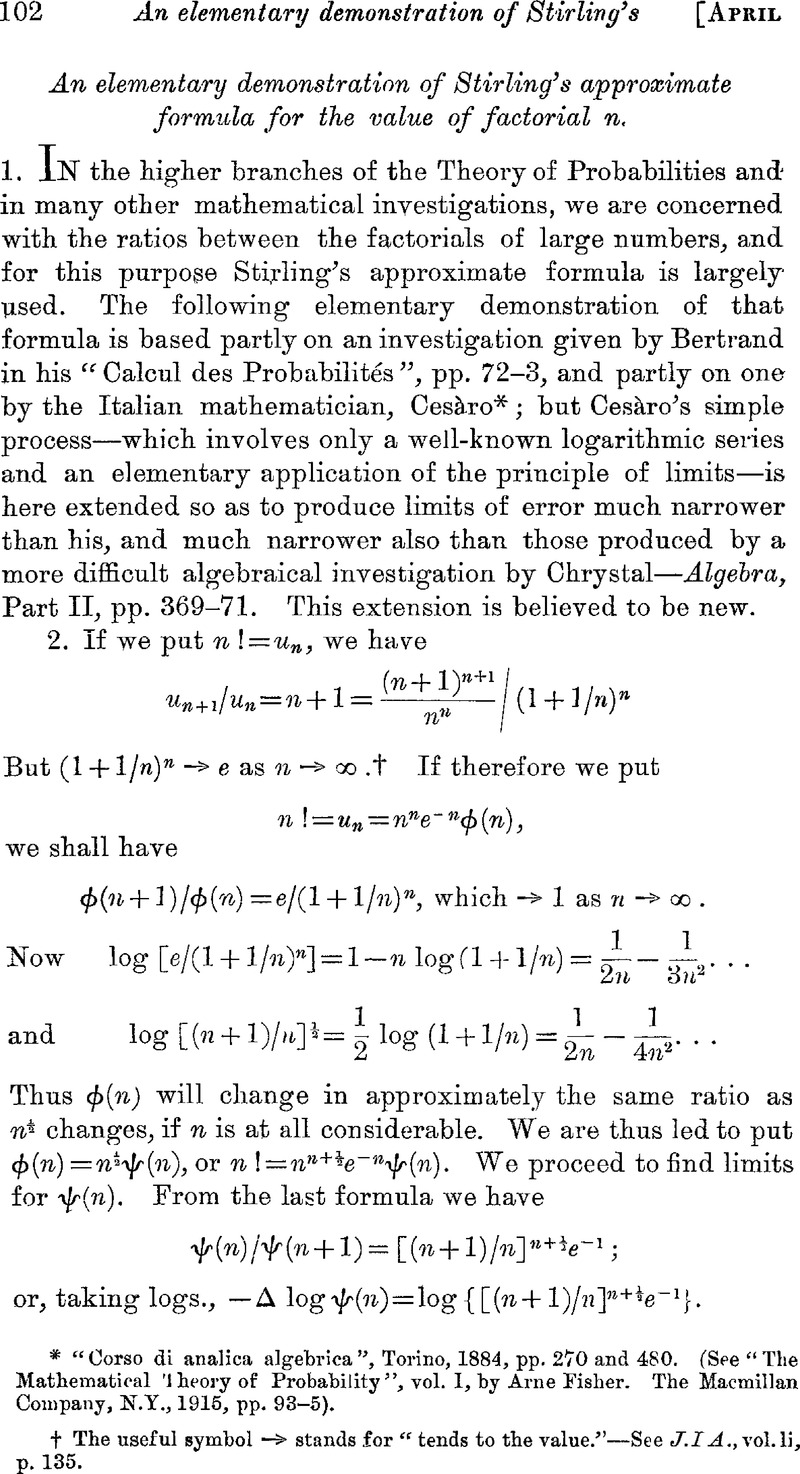No CrossRef data available.
Article contents
An elementary demonstration of Stirling’s approximate formula for the value of factorial n
Published online by Cambridge University Press: 18 August 2016
Abstract

- Type
- Other
- Information
- Copyright
- Copyright © Institute and Faculty of Actuaries 1921
References
page 102 note * “Corso di analica algebrica”, Torino, 1884, pp. 270 and 480. (See “The Mathematical Theory of Probability”, vol. I, by Fisher, Arne. The Macmillan Company, N.Y., 1915, pp. 93–5)Google Scholar.
page 102 note † The useful symbol → stands for “tends to the value.”—See J.I A., vol. li, p. 135.
page 104 note * Geometrically ψ(n)e –1/12n and ψ(n)e –1/12[n+t(n)] are both asymptotic to, but lie on opposite sides of, a line parallel to the axis of n.
page 105 note * If we take n so low as 10, e 1/240n 3 = ·0000018, so that we may get a value of log C correct to 5 places.
page 106 note * Since the Note was set up the writer has found that 1/12(n 2 + n + ·1) is > 1/12n – t(n) –[1/12(n + 1) – t(n + 1)], where t(n) = 1/360(n3 – n). Hence the factor e 1/240n 3 in the lower limit may he replaced by which is both nearer the true value and in closer agreement with that found by higher methods.


